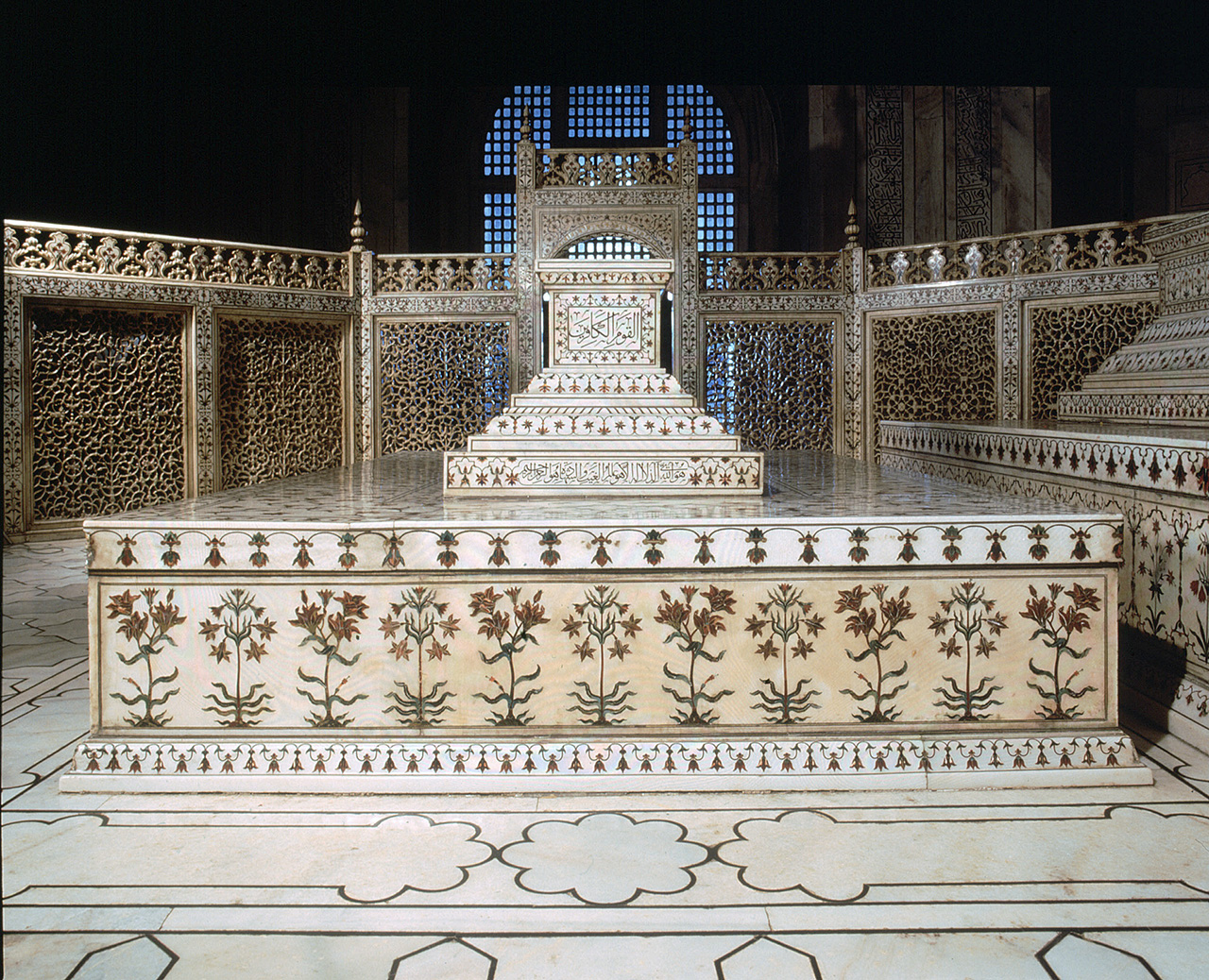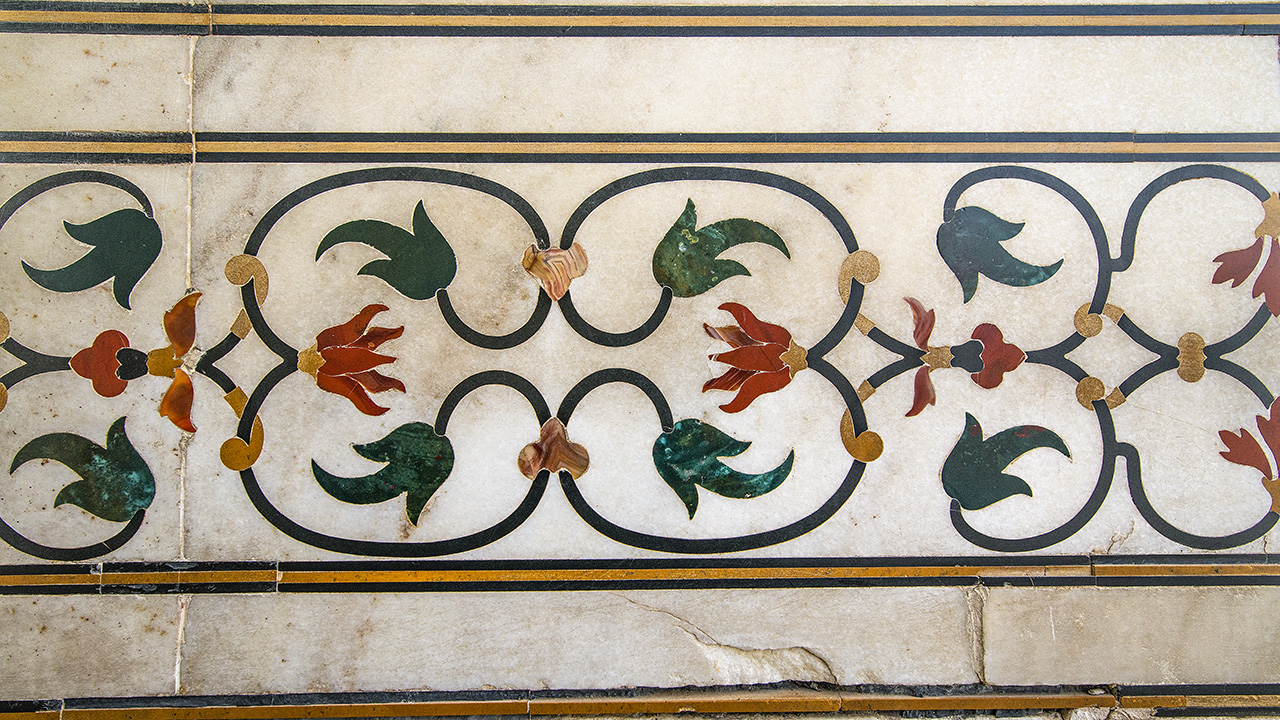Taj Mahal Agra has many myths and mysteries behind it which have mode this monument a theme of research and curiosity. In this present blog in am trying to debunk the popular Taj Mahal Myths.
The Mystery of Black Taj Mahal
The story of the black Taj Mahal is one of the top Taj Mahal Myths. It was made famous by the tour guides. The tourist also got amused listening to this story of the Black Taj Mahal across the river Yamuna. In the 1990s decade Archaeological Survey of India, the agency which takes care of the Taj Mahal conducted an extensive excavation at the supposed site of the black Taj Mahal but they found the remains of an extensive garden. The garden has an exact alignment with the Taj Mahal on the other side of the river Yamuna.
Reality of the black Taj Mahal story

Only one tower remains on the southeast corner this was supposedly a guard tower. The garden is a four-quartered garden very well according to the Mughal style of architecture-Chaar Baagh. The Mughal king Shahjahan had spent a fortune on the construction of the Taj Mahal. The state coffers certainly were not ready to bear the expenditure of another massive architecture endeavor. No written record of Mughal times has been found supporting the black Taj Mahal theory. Aurangzeb in a letter in fact has mentioned the existence of gardens on the other side of the river Yamuna. So the story of the black Taj Mahal is a myth purported probably by the then British officers and then by the tour guides.
- Taj Mahal Tours
- Taj Mahal Tour Packages
- Agra by Gatimaan Train 1 day Tour
- Taj Mahal Tour by Gatimaan Express
- Delhi to Agra by Train
- Taj Mahal Tour Package
- Jaipur Sightseeing
Shahjahan really cut off the hands of workers- One of the top Taj Mahal Myths
Thousands of people doubt whether Shahjahan cut off the arms of his workers so that they could not copy the Taj Mahal again. In my opinion, this is a myth and the story of amputation of the artisans is not right and well justified.
Shahjahan was probably the most popular king amongst the mighty Mughals, he was very much liked by his subjects “Jharokha darshan” a custom from the days of King Akbar the grandfather of Shahjahan, According to the custom the king used to come upon a window every morning and his subjects used to gather underneath to catch a glimpse of their ruler.
The king was equated to God in local customs. Shahjahan used to perform this ritual and every day thousands of subjects gathered underneath to see their favorite emperor. Had Shahjahan cut the limbs of 20000 odd artisans he would have been quite unpopular among his subjects. The chronicles say that the entire Agra wept on the death of Shahjahan and no smoke was to be seen as no food was prepared in any house to mourn the death of the emperor. So this myth is also just a myth.
A hidden diamond inside the Taj Mahal- One of the top Taj Mahal Myths.
Often the travelers question the tour guide where was the hidden diamond inside the Taj Mahal. This is again a farce. The reality is that the moon light has maximum intensity on the full moon light falling in September / October, In India, this night has been refered to as “Sharad Poornima”, some 35-36 years back there used to be a mela(fair) organized on Sharad poornima night inside the Tajmahal. People used to spend the entire night gazing at the Taj Mahal.

The glitter was cheered as “Wo Chamki”, entire night Taj Mahal was echoed with “wo chamki” Due to increased security threat finally in year1984 the fair was stopped. Now ASI allows full moon night viewing but with many restrictions. The reasons for the special glitter are the inlaid stones like malachite in white marble, the array of inlaid stones like cornelian malachite sparkle with moonlight falling at a specific angle on Sharad Poornima night so this myth is just a myth there is no element of truth in it.
Guest house inside the Taj Mahal
Taj Mahal in fact is a burial place. The place of burial is always calm it can never host guests nor parties so the building sure can’t be a guest house/Mehman Khana. The architecture of the Taj Mahal has almost perfect symmetry. While they made a mosque with its back towards the west so that when the devotees congregate and say their prayers they face mecca. The building on the opposite was known as “Jawaab” or the answer. The only visible reason for making this building is symmetry. The Jawaab or the answer is very similar to the question of the mosque and perfectly balances the outer façade of the Taj Mahal.
Suggested Tours–
- Golden Triangle Tour
- Golden Triangle Tour with Varanasi
- Golden Triangle Tour by Car
- Golden Triangle Tour with Ranthambore
- Golden Triangle Tour with Khajuraho Varanasi
Taj Mahal or Shiva Temple- Top Taj Mahal Myths
This question is a very common question as lots of people ask whether the Taj Mahal was a pre-existing shiva temple which was changed into a burial place for queen Mumtaj. Though in India the riverside (Ghat) is where mostly temples are located so it is probable that the site of the Taj Mahal prior to its construction had a temple but we do not have any written records of the same.

The architecture of the Taj Mahal is clear Indo Islamic while temple architecture is different from this style of architecture. The design and architecture of the Taj Mahal follow and sort of imitates the design of the tomb of Humayun and some other Islamic tombs of the Mughal era. The Tajmahal still has a working mosque and a replica of the mosque is also there. The flowing Islamic arches and the onion-shaped dome which is identical to the design of the dome of the mosque of Samarkand are also solid proof of the Taj Mahal being an Islamic building.
The chronicles of the Mughal times have a clear mention about the making of the Tajmahal, famous traveler Tavernier also mentions the Taj Mahal in his memoirs. Thus this seems to be only a myth in all probability.
Read about :- Taj Mahal Timings & Updates
Jewels used in the construction of the Taj Mahal
Yes, this is true the Taj Mahal had a lot of precious metals like gold and silver used in the construction but none remains today. The top finial which rises to 32 feet was made of more than 400 kilograms of solid gold. During the British era, the same was replaced with a replica of bronze. The bronze finial still adorns the Taj Mahal.

The screen around the graves of the cenotaph chamber is now made in white marble through this screen is an excellent display of the craftsmen’s ship but it is said that originally the screen around the graves was made in gold and silver and had real precious gems inserted. Aurangazeb son of Shahjahan had this screen removed and installed the present one in its place. The chandeliers originally were also done in Gold and silver, they were also replaced later. The doors were guided in gold and silver, which were also replaced. So this is very true that gold and silver were used to construct the Taj Mahal.

